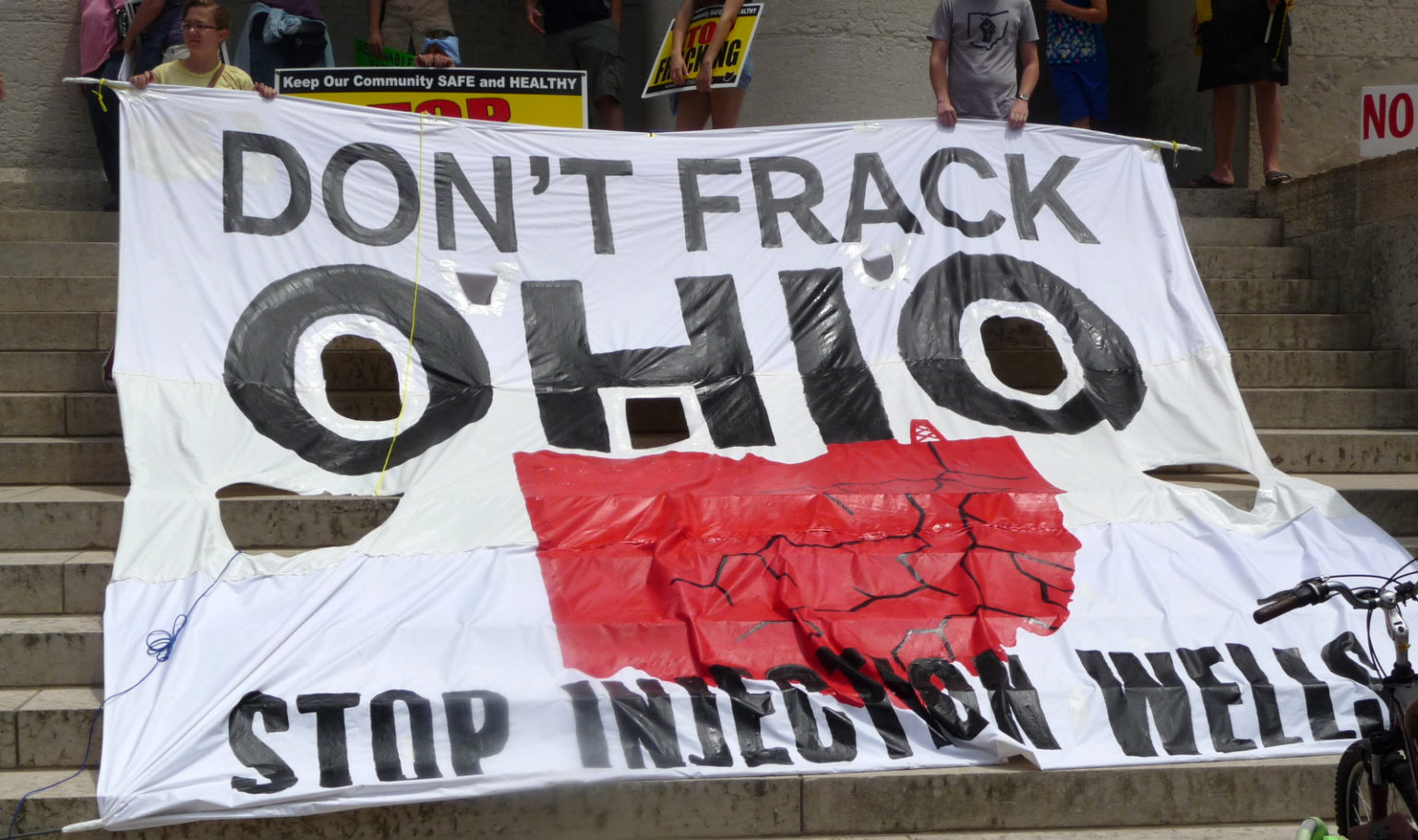For the first time since 2013, a group of activists in Youngstown, Ohio, has been told it cannot place an anti-fracking initiative on local ballots, due in part to a misinformation campaign from the fossil fuel industry.
On October 6, the Ohio Supreme Court ruled that two proposed ballot initiatives — one to outlaw fracking and fracking waste injections and another to regulate political campaign contributions within city limits — would not be up for a vote this November. In previous years, voters weighed in on similar initiatives, which were ultimately defeated.
The recent ruling came despite both initiatives receiving the required number of signatures to get on the ballot.
“We’ve become experts at collecting signatures!” said Susie Beiersdorfer of the Youngstown Community Bill of Rights Committee.
The initiatives were in large part a response to earthquakes caused by fracking waste injections, illegal dumping of fracking waste in a local river, and the expansion of fracking in this area of eastern Ohio.
Anti-fracking Initiatives in Youngstown
Starting in 2013, the Youngstown Community Bill of Rights Committee has successfully placed a “Community Bills of Rights” to outlaw fracking and fracking waste injections on six separate ballots.
Each election, the group has been vastly outspent and its initiatives voted down. But it has made gains. In November 2016, its community bill of rights initiative lost by only 2,279 votes.
“Citizens are realizing that our government system is fixed,” Beiersdorfer told DeSmog.
In response to being vastly outspent on past campaigns, this year the group also proposed a second initiative, the “People’s Bill of Rights for Fair Elections and Access to Local Government.” In addition to challenging corporations’ protections under the U.S. Constitution, the bill would ban outside private interests from contributing to local campaigns and limit campaign contributions to $100 for local elections.
Big Oil and Gas Come to Town
Soon after the Community Bill of Rights Committee gathered enough signatures for both initiatives to head to vote, the oil and gas industry launched a unique media campaign against not only the initiatives but the local ballot initiative process itself. The talking point: Local ballot measures cost taxpayers too much money and should be avoided.
Earlier this year the pro-fossil fuel outreach website Energy In Depth filed a freedom of information request from the City of Youngstown for costs associated with the local ballot initiative process. (In 2011 DeSmog exposed Energy In Depth, which billed itself as the product of small, independent oil and gas producers, as being funded by some of the biggest fossil fuel companies on the planet, including BP, Shell, Chevron, and XTO Energy/ExxonMobil.)
Energy In Depth reported that the city had spent $185,000 on the previous six anti-fracking ballot measures.
However, a DeSmog analysis of the same records shows that this figure is misleading and inaccurate. The $185,000 figure represents the total cost of six primary and general elections between 2013 and 2016, which included much more than just the anti-fracking initiatives.
According to the fiscal officer of the Mahoning County Board of Elections, which bills the City of Youngstown for election costs, there were five other charter amendments, 15 liquor options, and one county health board question that contributed to the city’s election invoice. Additionally, the figure touted by Energy In Depth includes paying poll workers in half of those elections, a regular cost incurred whether or not ballot measures were up for vote.
Despite this inaccuracy, Energy In Depth’s talking point and the $185,000 figure were quickly picked up by local outlets, fossil fuel–friendly publications and business journals. The U.S. Chamber of Commerce even compared the $185,000 to the amount of money that was spent managing the months-long anti-Dakota Access camps at Standing Rock (roughly $38 million) in a post called “The High Cost of Fracking Protesters.”
Seismic Shifts in Ohio Election Law
The basic insinuation — that elections are not a good use of public funds — filled airwaves in the midst of a critical legal battle over whether Youngstown residents would be allowed to vote on the two ballot initiatives.
Organizers with the Community Environmental Legal Defense Fund, who offered free legal services to the Youngstown petitioners, say they have seen the talking point about the cost of the local ballot process crop up elsewhere, including in Peters and Ferguson townships in Pennsylvania and in Spokane, Washington.
As in previous years, challenges to keep Youngstown’s community bill of rights initiatives off the ballot were filed. This year, however, the county board of elections had a new legislative tool, added to a state foreclosure law (HB463) in December 2016. The amendment gives local boards of elections unprecedented power to remove initiatives from the ballot.
As the Ohio Legislative Services Commission wrote, the new law “requires a board of elections or the Secretary of State to invalidate a local initiative petition if the board or Secretary determines that the petition or any portion of it does not fall within the scope of the local government’s constitutional authority to enact.”
Before HB463 and since 2015, Ohio Secretary of State Jon Husted, non-elected local boards of elections, and the Ohio Supreme Court have struck a total of 10 proposed county charters from Ohio ballots in five counties. Municipal ballot measures, however, were largely protected.
Until now. Armed with its new powers from HB463, the local board of elections removed Youngstown’s two initiatives from November’s ballot.
The petitioners appealed, unsuccessfully, to the Ohio Supreme Court.
Beiersdorfer quoted the popular saying: “First they ignore you. Then they laugh at you. Then they attack you. Then you win. Bring it on!” she says. “We don’t lose until we quit!”
Main image: An anti-fracking protest in Ohio from 2012. Credit: ProgressOhio, CC BY 2.0
Subscribe to our newsletter
Stay up to date with DeSmog news and alerts






